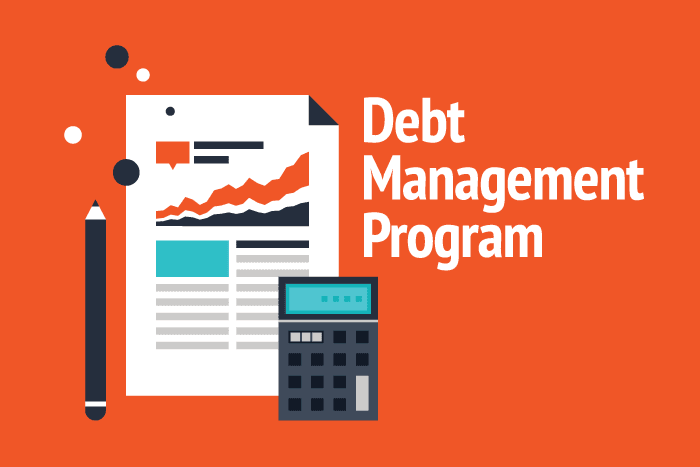Comparing Debt Loan Consolidation Choices: More Discussion Posted Here
Comparing Debt Loan Consolidation Choices: More Discussion Posted Here
Blog Article
Every Little Thing You Required to Learn About Producing a Tailored Debt Monitoring Strategy
In the realm of individual financing, devising a customized financial debt monitoring plan is typically the foundation of achieving economic stability and peace of mind. By diligently evaluating your current financial commitments, establishing achievable monetary purposes, and crafting a sensible spending plan, you lead the way for effective debt payment approaches. Nevertheless, the trip to financial freedom is not solely about first planning; it also needs continuous tracking and modifications to make sure ongoing development. As you browse the complexities of developing a tailored financial obligation management plan, understanding the ins and outs of each step is vital to your monetary success.
Evaluating Your Existing Financial Obligation Circumstance
One need to initially conduct an extensive analysis of their current debt responsibilities before formulating an efficient financial obligation monitoring strategy. Develop a thorough listing of each financial debt, including the total quantity owed, passion prices, minimum month-to-month payments, and due dates.
After compiling this info, determine your overall debt-to-income ratio by separating your month-to-month financial debt settlements by your monthly income. Understanding these facets of your economic situation will assist you in creating a customized financial obligation administration strategy tailored to your specific demands and objectives.
Setting Financial Goals and Targets

When setting economic objectives, it is essential to be details, measurable, possible, relevant, and time-bound (SMART) For instance, you may establish an objective to settle a certain quantity of financial debt within a particular time frame, such as lowering your credit report card balance by $5,000 in the following one year - More Discussion Posted Here. By setting clear targets such as this, you can track your progression and remain inspired to achieve your financial debt monitoring purposes
Furthermore, think about prioritizing your financial obligations based on elements such as rate of interest, outstanding equilibriums, and repayment terms. By concentrating on high-interest debts initially, you can conserve cash over time and accelerate your trip toward monetary liberty. Keep in mind, everyone's monetary scenario is unique, so customize your targets and objectives to fit your private needs and scenarios.
Creating a Realistic Spending Plan
Crafting a well-defined spending plan is a fundamental step in effective financial debt monitoring and monetary planning. A sensible budget plan serves as a roadmap for your monetary health, helping you track your income, costs, and financial obligation payments. To create a sensible spending plan, beginning by noting all your income sources. This includes your salary, side rush revenues, or any other monetary inflows. Next off, brochure all your dealt with expenditures such as rent or home mortgage, energies, insurance coverage, and finance repayments. Variable expenses like grocery stores, enjoyment, and transportation should additionally be consisted of. Distinguish in between wants and needs to prioritize crucial expenditures and determine locations where you can cut down.
When setting budget plan limitations, be straightforward with on your own regarding your investing practices and monetary obligations. Designate a portion of your income towards repaying financial debt while guaranteeing you have some funds for financial savings and emergency situations. Routinely testimonial and readjust your budget plan as required to remain on track with your financial goals and debt repayment strategy. By sticking to a realistic budget plan, you can efficiently handle your financial obligation and work in the direction of an extra safe and secure monetary future.
Exploring Financial Obligation Repayment Methods
After developing a realistic budget, the next critical action in reliable financial debt monitoring is to discover various financial obligation settlement techniques. One typical method is the snowball method, where you focus on repaying the smallest financial obligations initially while making minimal payments on bigger financial obligations. This technique can help construct energy as you see smaller financial obligations being cleared, supplying motivation to tackle larger ones.
Another strategy is the avalanche technique, which entails prioritizing debts with the highest rates visit this site right here of interest. By targeting high-interest financial debts first, you can reduce the total amount you pay in passion in time. This method might be more cost-efficient in the lengthy run, despite the fact that it may take longer to see private debts totally repaid.
Financial debt consolidation is an additional choice where you combine multiple financial obligations into a single car loan with a reduced rates of interest. This can streamline your settlement process and possibly reduce the complete rate of interest paid. However, it's essential to meticulously consider the costs and terms associated with loan consolidation to ensure it's the ideal option for your monetary situation.
Surveillance and Changing Your Plan

Adjusting your plan might include reallocating funds to tackle high-interest financial debts initially, negotiating with lenders for lower passion rates or far better payment terms, or checking out extra income resources to expedite debt repayment. As your economic circumstance advances, your debt management strategy must additional reading adapt appropriately to remain efficient. By remaining adaptable and aggressive in surveillance and readjusting your plan, you can enhance your initiatives towards repaying your financial obligations efficiently and attaining your monetary objectives.
Verdict
Finally, producing an individualized financial debt administration strategy entails evaluating current debt, setting financial goals, creating a reasonable budget, checking out repayment approaches, and surveillance and changing the plan as needed. By complying with these actions, individuals can take control of their economic scenario and work towards becoming debt-free. It is necessary to stay regimented and committed to the strategy in order to achieve long-term financial security.
One have to first carry out a thorough assessment of their current financial debt obligations prior to creating an effective financial obligation administration strategy.After establishing a realistic budget plan, the next crucial action in efficient financial debt management is to explore various financial obligation payment methods - More Discussion Posted Here.To properly handle your financial debt, constant monitoring and modification of your financial obligation administration strategy are vital components for lasting economic stability.Adjusting your plan may entail reapportioning funds to tackle high-interest useful source financial obligations first, negotiating with lenders for reduced rate of interest rates or better settlement terms, or checking out added earnings sources to expedite financial obligation payment.In verdict, developing a personalized financial debt administration strategy involves examining existing financial debt, establishing monetary objectives, creating a reasonable budget, exploring repayment strategies, and monitoring and readjusting the strategy as required
Report this page